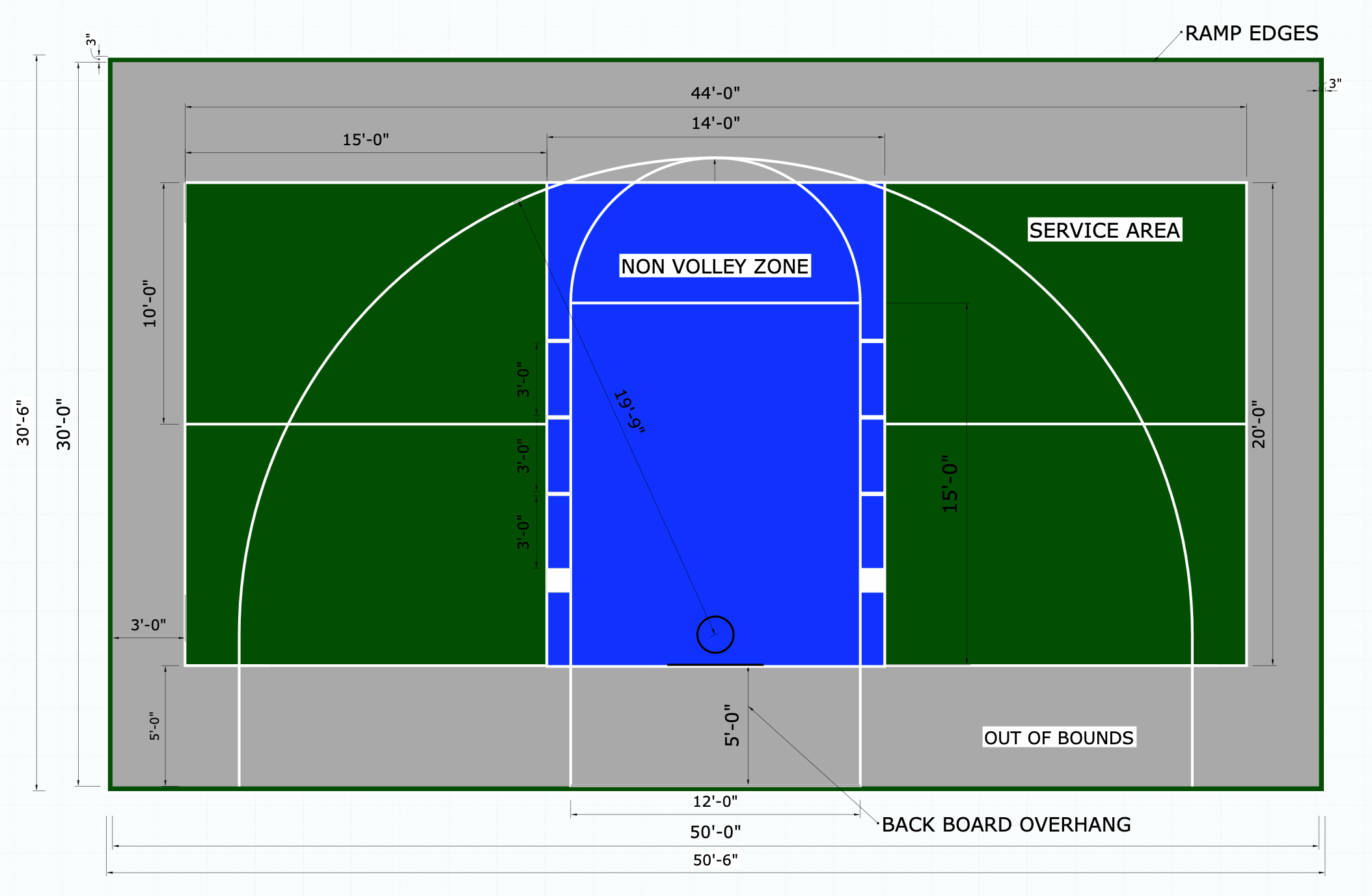How Illinois and Midwest are Leading the Way in Pickleball Courts Design & Construction
How Illinois and Midwest are Leading the Way in Pickleball Courts Design & Construction
Blog Article
Exploring the Various Sorts Of Pickleball Courts: Indoor, Outdoor, and Specialized Surfaces
The landscape of pickleball courts is diverse, including indoor, outside, and specialized surface areas, each offering special features that can dramatically affect gamer experience and efficiency. Interior courts give climate-controlled environments, while exterior options invite natural environments that can enhance social interaction. Additionally, specialized surfaces satisfy differing gamer requirements, from supporting for joint health and wellness to improved hold for affordable play. Comprehending these differences is critical for gamers, trains, and center supervisors alike, as it affects not only performance but also the overall enjoyment of the game. What variables should one consider when picking the ideal court for their needs?
Indoor Pickleball Judiciaries
Although exterior pickleball courts are prominent, indoor pickleball courts supply a regulated setting that enhances gameplay regardless of weather conditions. These courts are typically housed in facilities such as health clubs, recreation center, and devoted sports complexes, giving gamers with a constant playing surface devoid of the changability of rain, wind, or extreme temperature levels.

Another considerable advantage of interior pickleball courts is the accessibility they offer year-round. Players can involve in the sporting activity without concern for seasonal changes, making it an attractive choice for organization play and events. In addition, many indoor facilities provide facilities such as locker spaces, remainder areas, and social rooms, fostering a sense of community among players. In general, interior pickleball courts play an important function in promoting the sport and fitting its growing popularity.
Exterior Pickleball Courts
Outside pickleball courts supply an one-of-a-kind having fun experience that links players with nature while supplying a possibility for social communication and neighborhood engagement. These courts are usually built in parks, leisure areas, and area facilities, making them available to a broad target market.
The design of exterior courts mirrors that of indoor centers, including a rectangular playing surface gauging 20 feet broad by 44 feet long for increases matches. Exterior courts also existing challenges such as differing weather conditions, which can influence gameplay - Illinois and midwest.
Moreover, outdoor courts frequently cultivate a sense of area, as they are frequently used for neighborhood tournaments, facilities, and casual play. This public element urges players of all skill degrees to engage with one an additional, promoting both affordable spirit and friendship.
Specialized Pickleball Court Surfaces

Usual products made use of for specialized pickleball courts include acrylic and cushioned surfaces, which offer a balance of firmness and convenience. Polymer surface areas, usually utilized in outdoor setups, give superb climate resistance and can be repainted with vivid shades for presence and aesthetic appeals. Cushioned surface areas, normally located inside your home, use added shock absorption, minimizing the pressure on gamers' joints throughout intense play.
Additionally, specific surface areas can be tailored to suit numerous skill degrees and player choices. For instance, recreational gamers might gain from softer surfaces that enable for longer rallies and much less tiredness, while affordable gamers may favor firmer surfaces for faster sphere reaction blog and raised control.
Comparing Court Features
When examining pickleball courts, numerous qualities enter play that can substantially influence the overall experience for gamers. Among the primary aspects is the surface area material, which can range from concrete to customized sports flooring. Concrete surface areas often tend to be durable however might cause a tougher bounce, while softer surfaces can offer far better grasp and shock absorption, enhancing player convenience.
Another essential attribute is court measurements. Conventional pickleball courts gauge 20 feet wide by 44 feet long for doubles play; nevertheless, certain centers may change these measurements based upon readily available space or player preferences. In addition, the elevation of bordering wall surfaces or barriers my link can influence gameplay, especially in indoor setups where round rebound is a factor.
Lighting is also important, specifically in indoor courts where visibility can diminish performance. Appropriately designed lighting minimizes shadows and makes sure regular visibility across the playing area. Exterior courts must think about environmental elements such as wind and sunlight, requiring calculated positioning and potentially the use of windbreaks or shade structures. Each of these attributes plays a crucial function in shaping the total pickleball experience, making thoughtful evaluation essential for gamers and facility managers alike.
Picking the Right Court
Choosing the right pickleball court entails careful factor to consider of different variables that directly affect player experience and efficiency. One of the key considerations is the court surface area. Indoor published here courts commonly feature wood or synthetic products that provide constant bounce and traction, while outside courts might utilize asphalt or concrete, which can influence ball rate and player motion.
Ecological conditions likewise play a vital duty. Outside courts undergo wind, sunlight, and varying temperature levels, all of which can influence gameplay. Conversely, indoor courts supply a controlled climate, permitting year-round play without the interference of weather condition problems.
Location is one more vital element; access can identify just how often players can participate in the sporting activity. Proximity to home or work, in addition to the schedule of facilities such as illumination and seats, can boost the overall experience.
Finally, the degree of competitors and area atmosphere ought to not be ignored. Picking a court that straightens with one's skill level and social preferences can dramatically improve satisfaction and motivation. By thoroughly evaluating these components, gamers can make an informed decision that maximizes their pickleball experience.
Conclusion
Interior courts supply regulated conditions that improve play, while outdoor courts provide an one-of-a-kind setting that promotes community communication despite prospective weather obstacles. Eventually, selecting the ideal court type is vital for optimizing pleasure and skill growth in pickleball, guaranteeing gamers can completely involve with the sport in their preferred setting.
Report this page